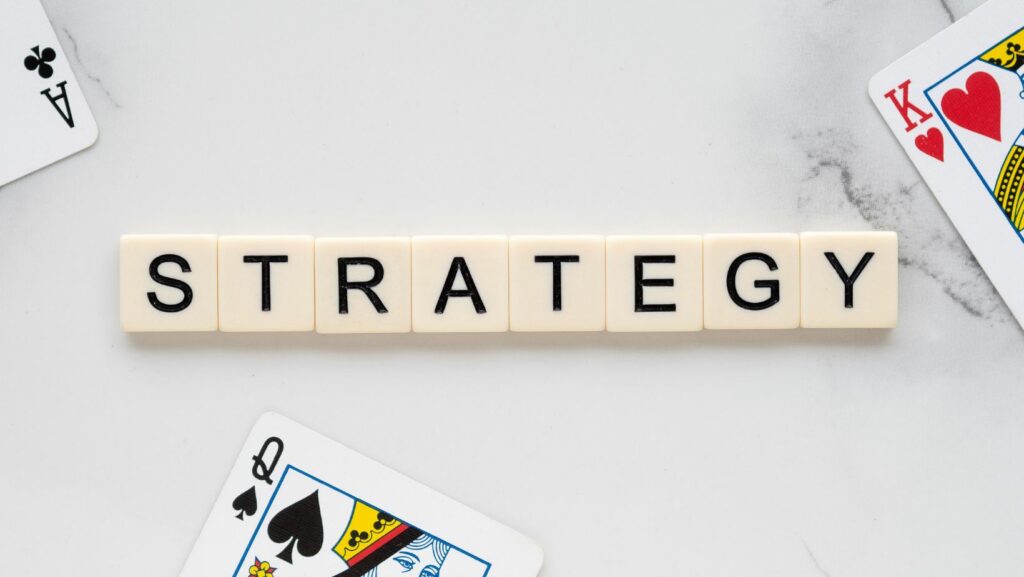In the dynamic world of business, politics, and even daily life, the terms ‘tactics’ and ‘strategy’ often intermingle. Yet, their essence is vastly different and understanding this difference can be the key to success.
Whether you’re a budding entrepreneur, a seasoned politician, or just someone trying to navigate life’s challenges, understanding tactics and strategy is crucial. They’re not just fancy buzzwords; they’re the backbone of effective decision-making and problem-solving.
Tactics and Strategy
The Definition of Tactics
 Tactics signify short-term actions or plans designed to achieve a specific end. In its essence, a tactic refers to an operational method employed to gain a favorable position or outcome. For example, in the context of chess, opting for a certain knight movement to capture the opponent’s piece is a tactical maneuver.
Tactics signify short-term actions or plans designed to achieve a specific end. In its essence, a tactic refers to an operational method employed to gain a favorable position or outcome. For example, in the context of chess, opting for a certain knight movement to capture the opponent’s piece is a tactical maneuver.
The Definition of Strategy
In contrast, a strategy is a broader, long-term plan that encompasses a series of tactics. Strategy serves as an overarching guide, setting a clear path to achieve long-term objectives. For instance, in a business context, a company’s strategic plan might involve expanding to new markets, requiring a combination of tactical approaches like market research, aggressive marketing, and competitive pricing.
Historical Examples of Tactics and Strategy
Military Strategies Through the Ages
 Military history offers a treasure trove of strategic insights. Consider the ancient Chinese strategist, Sun Tzu. Author of “The Art of War,” Sun Tzu transformed warfare with his strategic principles, one being “the supreme art of war is to subdue the enemy without fighting.” He exemplified this in the Battle of Boju, where he overcame a numerically superior foe through planned logistics, information warfare, and psychological operations.
Military history offers a treasure trove of strategic insights. Consider the ancient Chinese strategist, Sun Tzu. Author of “The Art of War,” Sun Tzu transformed warfare with his strategic principles, one being “the supreme art of war is to subdue the enemy without fighting.” He exemplified this in the Battle of Boju, where he overcame a numerically superior foe through planned logistics, information warfare, and psychological operations.
In a different era, Napoleon Bonaparte exemplified strategic innovation during the Napoleonic Wars. He redefined European warfare with his “divide and rule” strategy. Rather than engaging the enemy’s entire force, Napoleon divided his adversaries into isolated groups, conquering each individually.
Tactical Maneuvers in Historical Battles
Tactics play a crucial role during the heat of combat. For instance, during the Battle of Cannae in 216 B.C., Hannibal Barca employed the tactical maneuver of “double envelopment.” With a weaker center and stronger flanks, he lured the opposing Roman force into a trap, encircling them completely. This technique led to a staggering victory, demonstrating the power of tactical ingenuity.
For a more recent example, consider the D-Day landings during World War II. More specifically, the operation at Omaha Beach required precise tactical execution. Despite facing formidable German defenses, Allied forces executed a carefully orchestrated assault, hauling equipment across difficult terrain and arduous conditions, securing the beach and changing the landscape of the war.
Modern Applications of Tactics and Strategy
In Business and Management
 Business world, a battlefield in its way, employs strategy and tactics, plucking key lessons from military history. CEOs, like generals, devise long-term strategies, translating their vision into reality. For instance, Steve Jobs’s launch of iPhone in 2007, it exemplified strategic thinking. He acknowledged the growing trend of digitization and devised a strategy aimed at placing Apple at the forefront of this digital revolution.
Business world, a battlefield in its way, employs strategy and tactics, plucking key lessons from military history. CEOs, like generals, devise long-term strategies, translating their vision into reality. For instance, Steve Jobs’s launch of iPhone in 2007, it exemplified strategic thinking. He acknowledged the growing trend of digitization and devised a strategy aimed at placing Apple at the forefront of this digital revolution.
Tactics, on the other hand, act as the fulcrum of daily operations. They’re akin to the maneuvers performed by soldiers on the battleground. Marketing campaigns, sales initiatives, and product launches all personify tactics in business. Amazon’s Prime Day, a masterstroke of tactical execution, boosts sales, rewarding loyal customers while attracting new ones.
In Sports and Games
The importance of tactics and strategy isn’t restricted to militaristic or business contexts, however. They’ve found relevance in sports and games as well, acting as a differentiator between victory and defeat.
Chess reigns as the epitome of strategic and tactical gameplay. Players sketch long-term strategies, dictate the flow of the game, and create opportunities for tactical plays. The famous “Queen’s Gambit” move, it’s a well-known strategic play, creating an edge by denying the opponent control over the center of the board.
Football, another classic example, showcases tactical versatility. Coaches devise strategic blueprints, determining how the team plays, while tactics inform minute-by-minute decisions on the field—deciding when to attack or defend, how to respond to an opponent’s move—these are decisions made in real-time, embodying the essence of tactics.

